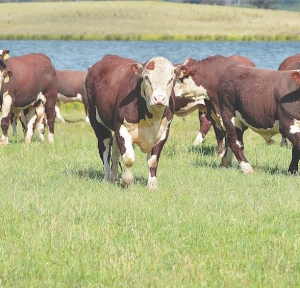Meat & Livestock Australia forecasts that by June 2015 the Australian cattle herd will have fallen to 26.1 million head – the lowest in 20 years.
MLA spokesman Tim McRae attributes this to wide, severe drought in the key cattle regions of Queensland and NSW.
In turn, the national cattle slaughter has continued at rarely seen levels for 18 months, cutting the numbers available for processing or exporting in coming years, says McRae.
“The sustained high adult cattle slaughter levels of the past 24 months, combined with near-record live cattle shipments, have eroded the production capacity of the Australian herd heading into the second half of 2014. But with the inevitable tightening of supply, prices for Australian cattle are forecast to increase into next year, bringing them back in line with global cattle and beef prices.
“The limiting factor in a price turnaround for the Australian market will be seasonal conditions for the remainder of 2014 and the northern 2014-15 wet season.”
On the live export front, the strong demand for cattle is expected to hold, with shipments for 2014 tipped to exceed 1.1 million head, on track for their highest level since 2003.
Beef and veal exports, driven by surging female slaughter and production levels, are also tipped to reach 1.1 million tonnes swt, matching the 2013 record level.
Export demand, particularly through Asia, had helped to alleviate some supply and price pressure in the southern markets.
In 2015, the competition for a smaller volume of Australian beef is likely to intensify, says McRae.
“With the emergence of China, record prices for manufacturing beef in the US and improved market access agreements into Japan and Korea, the global competition for Australian beef is extremely strong heading into the second half of 2014.”
The US market is forecast to be Australia’s largest export beef market in 2014, surpassing Japan for the first time since 2003.
However, after two years of drought still to be broken, and an uncomfortably high Australian dollar, the Australian cattle industry still faces some major production and competitive issues.

















